Hey, do you know that the thyroid gland, situating in your neck, produces two hormones that control and regulate your body’s metabolism altogether?
That’s right!
The thyroid plays a crucial role in converting the food you intake into energy particles to streamline the functions of your organs and health system. A determiner, indeed!
But, sometimes, abnormalities pop up right in the shape, size, or position of your thyroid gland, and that is exactly when the need for a thyroid scan appears into the picture.
Perhaps, such a diagnostic process holds the potential to locate any kind of defects in your thyroid gland! And even reflect whether your body is responding to the treatments of thyroid-related disorders like hyperthyroidism, thyroid cancers, inflammation or infections in the thyroid gland, and so forth.
In this article, we shall dive into the purposes behind such a diagnostic method. And understand what the process involves, actually. Alongside, we shall also observe how safe the process is and note down the preparation before up-taking it.
So, what are you waiting for?
Scroll with me and learn about thyroid scans in detail…
CContents
What is the purpose behind thyroid scans?
Well, every assessment comes with a purpose, and when the purpose revolves around your health conditions, you need to immediately find out what it is! The main purpose is to find out whether your thyroid gland is functioning properly.
The pursuit of examining overactive thyroid gland
The nuclear medicines used in this process can help examine the molecular activity accurately. Thereupon, showcasing whether the thyroid gland or nodules within it are overactive or normal.
Are you wondering what does that means?
Sometimes, the thyroid gland becomes overactive, producing excessive thyroid hormones thereafter. In turn, the excess hormones tend to accelerate the metabolism rate of your body.
Such a condition is what medical science calls hyperthyroidism. Thus, seeking diagnosis and treatment!
The purpose of examining underactive thyroid gland
On the contrary to the aforementioned condition, the thyroid gland may even tend to become underactive, reducing the production of hormones that slows down your body’s metabolism. It means the chemical process of converting food to energy deteriorates and so does your entire body functioning.
Isn’t that a purpose to step into the process of diagnosis and treatment? Well, it is!
The purpose of evaluating inflammation or enlargement of the thyroid gland
Similarly, another purpose of a thyroid scan is to evaluate any abnormal enlargement of your thyroid gland. Goiter is what medical science calls it! And such a condition usually occurs due to the lack of iodine in your dietary habits.
What is more alarming is that age and gender can be major risk factors here. Yes, females and individuals above the age of 40 are likely to suffer from goiter. During this condition, your thyroid gland swells up enormously, making it difficult for you to eat even though it is not painful.
A thyroid scan can serve thy purpose by assessing such a condition with precision!
The need for investigating the mark of existence of benign or malignant tumors
Tumors and cysts in the thyroid gland are not something that you can locate by just touching your neck unless it grows big in size. In this regard, a thyroid scan can aid! The imaging of your gland will show you if and where they exactly reside.
In fact, a thyroid scan also serves in deciphering the presence of cancerous cells in your thyroid gland and any mass or lump existing there that is not benign in nature.
The need to crosscheck the health condition during the post-treatment phase
Here again, the diagnostic method helps the doctor to evaluate the changes that follow the various treatments. For instance, after chemotherapy or radiation therapy, the thyroid scan results will tell you whether the deadly cancerous lumps still exist or are they gone, somewhat flipping into the thin air. And whether your survivability marches a step ahead!
Now that we know the various health conditions concerning the thyroid gland that asks for diagnostic tests like thyroid scan, we shall endeavour the outline the procedure thoroughly!
So, please do not hesitate to read with me…
Outlining the procedure thoroughly!
As a type of nuclear medicine imaging, the procedure of thyroid scan involves the use of some small amount of radioactive substances known as radio tracers. And once these radio tracers go into your body, the thyroid gland or the underlying cysts or tumors absorb it naturally. Corollary builds up upon your thyroid tissue which helps the scanner or gamma camera to detect the radioactive emission with accuracy.
Yes, the test is absolutely non-invasive in characteristics! And is performed on an outpatient basis in different hospitals, clinics, or diagnostic centers. The team in action comprises a radiologist, a thyroid surgeon, radiation safety officers, and sometimes an endocrinologist.
Step 1: Primarily, the healthcare providers will give you the radionuclide to swallow. But, how? Certainly, the substances come in the form of a pill, capsule, or liquid. Sometimes, they are also rendered in the form of injection but they are generally painless.
Step 2: Then, a period of wait! It is time for your thyroid gland to absorb the radioactive iodine.
Step 3: Once the necessary time span is met you will have to move ahead with the diagnostic process.
Step 4: When you are already in the diagnostic room, you will see an examination table ready in front of you with two parallel camera heads on either side. That is where you are going to lie down. Relax! It is not anything to panic about. The radiologist will likely tip your head back for extended your neck towards the camera.
Step 5: Here, the radiologist will try to take pictures of your thyroid from different angles to understand the radioactive emission, at least from three different sides. Sometimes, the radiologist may even orient it to a 90-degree angle over your body.
Disclaimer! You shall have to stay calm and still during this course and thus allow your diagnostic service providers to take exact photos.
That is all!
The entire procedure involves no more than 30 minutes, and there is no waiting list to bother you before so.
If there is any, Health Finder is there to rescue. By connecting you to the best radiology labs straightaway with an online booking facility, no extra time can go to waste!
Note – In case of a metastatic survey, the photos of your thyroid gland will be taken from both your front and back sides.
Now that the photos are taken, the radiologist shall extract the molecular information from the camera and computer-produce to see the structure as well as the function of the gland. Is that possible? Certainly! Latest technologies in the field of medical science like gamma cameras capture the energy emission from the radiotracers and bring it in front of us in the form of images. However, the camera does not emit any radioactive rays.
Yet again, our mind gets filled with fear, and we constantly ask ourselves if there are any side effects. Is the method safe? Will I have to face negative consequences because of the exposure to radioactive rays?
That is what we shall find out next!
So sit back and continue…
Is thyroid scan safe?
Firstly, the amount of radiation is very low. So, the chance of risk factor is equally negligible. Sometimes, you may witness rashes or allergies that are most likely to disappear on their own within a day or two. For this purpose, always let your doctor know about the allergies you have.
Further, concerning safety, all diagnostic procedures brought about by the researchers of medical science and technology are, perhaps, safe! There are no deadly side effects as such.
It is because the radio-tracers that your thyroid gland has absorbed naturally will also move out from your body naturally. It normally leaves within two days following your test, either by urine, or sweat or maybe by vaginal secretions. On the same note, the radio-tracers can also get excreted in the form of tears, feces, and saliva.
During this time, your doctor may suggest drinking a lot of water and subsequently emptying your bladder so that the radionuclide flushes out meanwhile.
Certainly, thyroid scans do not pose any threat to long-term complications. Instead, the potential perks overweight the mild risk of redness in your skin or rashes.
So, gear up and prepare yourself if your doctor has asked you to pursue a thyroid test.
We shall help you here again!
Underscoring the preparation before the thyroid scan!
No doubt, preparation before a thyroid scan stands salient. Precisely because conditions related to thyroid take a zigzag road map throughout your life depending on various factors. Sometimes, you may have to take medication for years to control the determiner of metabolism itself.
There you go! Below lay the course of action that can help you acquire the benefits of this diagnostic process to the fullest.
The Dos & Don’ts:
- Undoubtedly, before pursuing the test, you have to inform your doctor about the over-the-counter medications you are taking. And when asked to stop, you have to do so.
- For approximately six to four weeks before the procedure, you have to pause taking your thyroid medications, if any. Adjusting the intake of some heart medications that contain iodine also stands as requisite.
iii. Alas! You have to probably avoid certain foods for at least a week before the test, the food that contains iodine! For example, the different dairy products, sushi, shellfish, iodized salt, seaweed, kelp, seasonings, etc.
- Likewise, you will have to restrict yourself from using cough syrup, multivitamins, and supplements.
- Also, avoid using medicines like betadine in your skin for around one month before the diagnosis.
- While up-taking a thyroid scan, you cannot opt for any other diagnostic procedure that involves the use of radioactive iodine like X-ray, CT scan, IVPs, and others.
vii. Pregnant and breastfeeding women must tell their doctor about it beforehand.
Prior to the thyroid scan procedure, the doctor may ask for a blood test for measuring the hormone level in your bloodstream.
Sorry, but you cannot eat or drink anything for definite hours before the thyroid scan. Why? That is because eating can disrupt the accuracy of the measurement by moderating the metabolic rate. Of course, the estimation of the time span will be referred to you by your doctor.
Apart from that, try leaving your accessories or pieces of jewellery at home or anywhere you feel comfortable before the test. You may or may not have to wear a gown depending upon the provisions of the center.
After the scan is over, you can typically resume your normal activities and have a regular diet. And finally, your doctor will discuss the diagnostic report with you and proceed with the necessary treatment.
Final thoughts:
Are you still there, glancing through the facts of the thyroid scan?
Here we sum up!
By now, you know what the different conditions are that may seek thyroid scan, how the test is performed, what you have to do during and after the test, and how safe it is.
All you need to do now is to consult a doctor as soon as you face a problem in the normal functioning of your thyroid, typically if you find unintentional weight gain or loss.



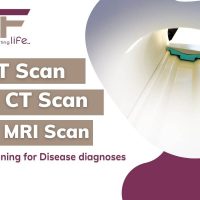

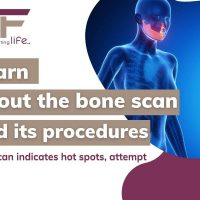
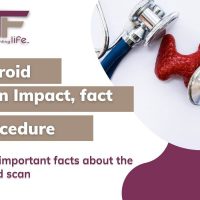
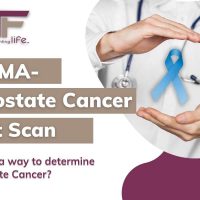
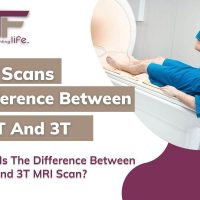

Comments